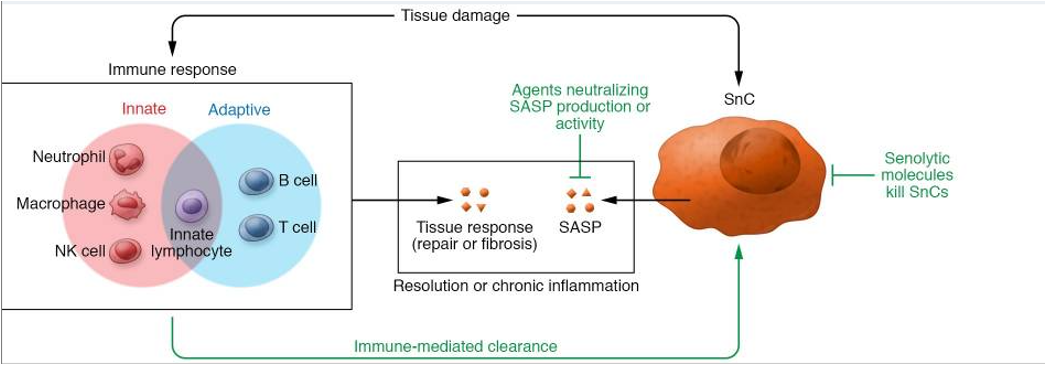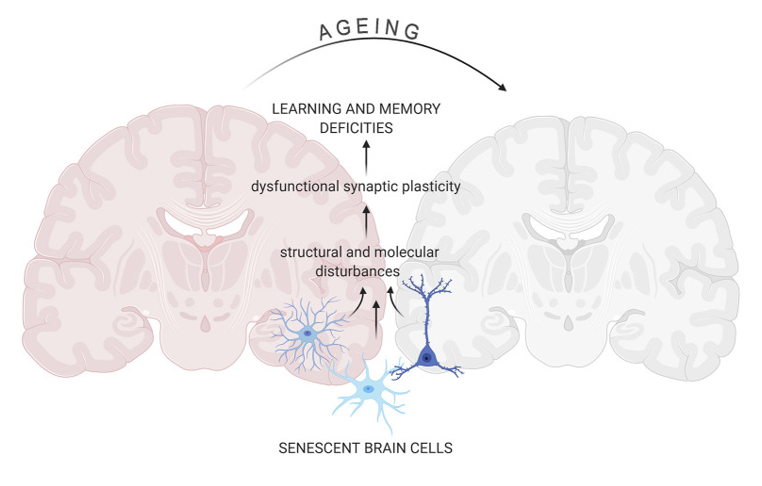Clinical Implications of Senescent Cells
Any patient who is aging in the modern world is likely experiencing DNA damage to some extent, telomere or mitochondrial dysfunction, oxidative stress, among other detrimental stressors, all of which contribute to the formation and accumulation of senescent cells.
And age-related disorders are at the forefront of concerns when it comes to excess cellular senescence. And while measuring senescent cells is not routine, one biomarker that is routinely checked is hsCRP, looking at inflammation levels within the body. When considering the output of inflammatory cytokines from senescent cells, we can reasonably connect the two and aim to support a healthy inflammatory response by working on specific transcription factors such as NF-kappa B but also by enhancing the clearance of these zombie cells and preventing future accumulation.
Supporting the process of inhibiting the accumulation and/or optimizing elimination of senescent cells (senolysis) can also have a clinically significant impact on the immune system. This is especially true in a day and age when viral overload can trigger what is known as a cytokine storm. It has been found that with active viral infections there exists a positive feedback loop where a systemic increase in senescent cells will induce a further proliferation of senescence, which has been theorized to set the stage for long term sequelae, especially in viral infection cases. (Transl Res. 2022 Mar; 241: 96–108., Aging (Albany NY). 2021 Aug 15; 13(15): 19088–19107.)

With regard to musculoskeletal involvement, it has been observed for years that a presence of senescent cells in cartilage isolated from patients undergoing total knee artificial implants. The relevance of these cells within the joint and their potential for clinical involvement was unclear. However, there is new evidence for the causative role of senescent cells in the development of posttraumatic and age-related arthritis as well as the therapeutic benefit of senescent cell clearance. (J Clin Invest. 2018 Apr 2; 128(4): 1229–1237.)

Most notable and perhaps the most well documented is the role of cellular senescence when it comes to the brain. Frontiers in Aging Neuroscience has published a very comprehensive guide as to the extent to which cellular senescence influences brain structure and functionality. Most notable, the ‘accumulation of senescent glia cells and neurons lead to structural and functional changes in the brain that result in cognitive impairment’. (Front Aging Neurosci. 2021; 13: 646924.)

Senolytic Science Part II